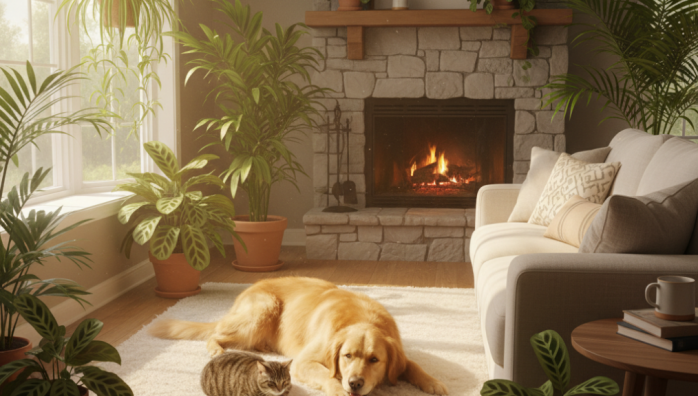Pet-Friendly Indoor Plant Varieties
by admin in Pet Care Basics 18 - Last Update November 17, 2025

When I first brought home my rescue beagle, Max, I went into full-on pet-proofing mode. I secured the cabinets, hid the cables, and then I looked at my beloved collection of houseplants. It hit me like a ton of bricks: are these beautiful green friends a danger to my new furry one? That question sent me down a rabbit hole of research, and honestly, it was pretty stressful figuring out what was safe and what wasn\'t.
Over the years, with both dogs and cats sharing my home, I\'ve learned that creating a green, vibrant space that\'s also a safe haven for my pets is not only possible but incredibly rewarding. It just takes a little knowledge. You don\'t have to give up your dream of an indoor jungle to be a responsible pet owner.
Why some plants are dangerous to our pets
Before I share my go-to list, it\'s helpful to understand what makes a plant toxic. Many common houseplants contain substances like insoluble calcium oxalate crystals. When a pet chews on them, these microscopic crystals cause intense pain and irritation in their mouth, throat, and stomach. Others might contain compounds that affect the heart or kidneys. I\'m not a botanist, but I\'ve learned enough to know that it\'s not worth the risk. My rule is simple: if I\'m not 100% sure it\'s safe, it doesn\'t come in the house.
My favorite non-toxic plants for a pet-filled home
Here are some of the beautiful, resilient, and most importantly, safe plants that I personally have in my home right now. They\'ve all passed the sniff test (and occasional nibble test) from my curious companions.
The Spider Plant (Chlorophytum comosum)
This is probably the most classic pet-safe plant, and for good reason. It\'s incredibly easy to care for and its dangling \"pups\" are endlessly fascinating to my cat, Luna. I keep a few hanging in macrame hangers, which keeps them mostly out of reach while adding a nice vertical element to the room.
The Prayer Plant (Calathea)
I absolutely adore Calatheas. Their leaves are like works of art, with stunning patterns of green, pink, and cream. What\'s more, they fold their leaves up at night as if in prayer, which is a lovely little quirk. They require a bit more humidity than other plants, so I keep mine in the bathroom where it thrives, and I don\'t have to worry when the dog wanders in.
The Boston Fern (Nephrolepis exaltata)
If you want a lush, jungle-like vibe, the Boston Fern is your answer. These are completely non-toxic and look amazing in a hanging basket. They do shed a little, I\'ve found, but the peace of mind knowing they\'re safe for my pets is well worth a little extra sweeping.
The Money Tree (Pachira aquatica)
Stylish and safe! The braided trunk of the Money Tree makes it a beautiful statement piece. I was so happy to learn it\'s non-toxic to cats and dogs. Mine sits in a corner of the living room, and while my beagle showed some initial interest in the trunk, he quickly got bored and now leaves it alone.
A quick but important reminder
Just because a plant is non-toxic doesn\'t mean it\'s a good idea for your pet to eat a three-course meal of its leaves. Ingesting a large amount of any plant material can cause an upset stomach or vomiting. I always try to place my plants strategically or use gentle deterrents if one of my pets shows a little too much interest. Of course, every pet is different, and if you have any concerns, a quick chat with your vet is always the best course of action. They can provide guidance specific to your animal\'s health and habits.











